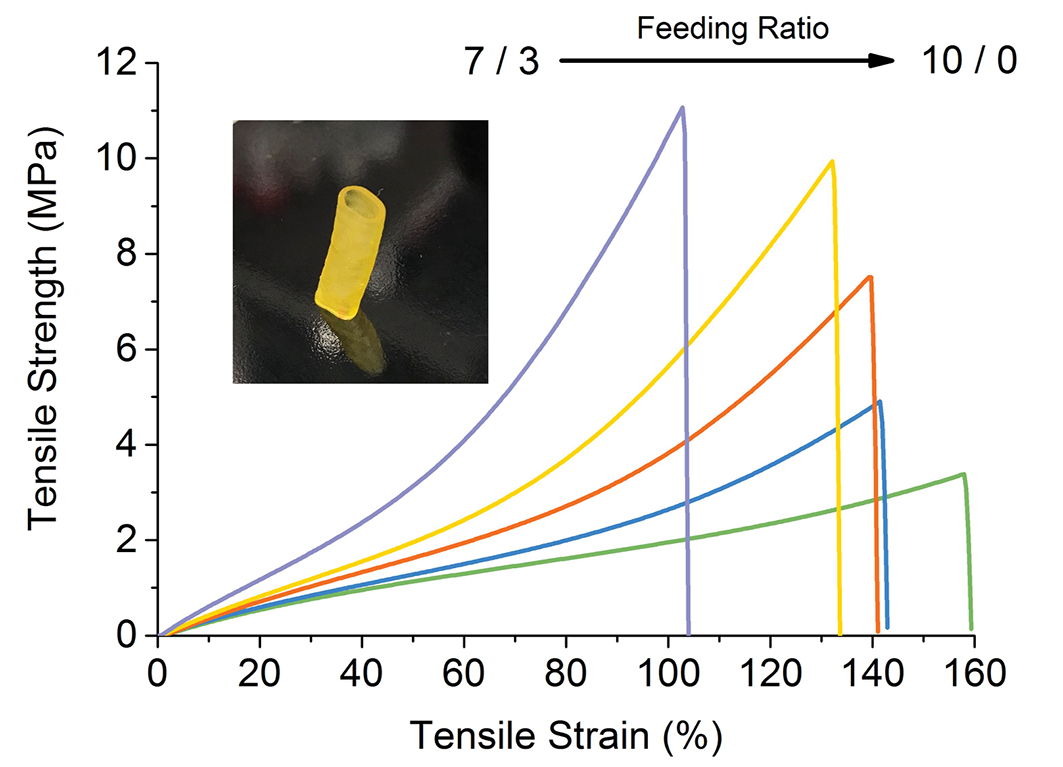3D Printing of Personalized Biodegradable Airway Stents via Vat Photopolymerization
Stereolithography (SLA)-based 3D printing exhibits distinguished advantages including high resolution, good surface quality and relatively low cost. It is based on a vat photopolymerization process, taking place in a bath containing liquid (macro)monomers and photoinitiators. In combination with medical imaging techniques, this might provide enormous opportunities to design customized drug formulations and biomedical devices.[1] Unfortunately, the lack of biomaterials suitable for SLA limits its medical applications, especially when the manufacture of biodegradable elastic devices is sought. As a typical elastic implant, airway stents are designed to simulate the airway anatomy, palliating symptoms in patients suffering from central airway obstruction. However, the clinical use of commercial one-size-fits-all stents is often constrained by the geometrical mismatching to the complex tracheabronchial anatomy of individual patients.[2] Therefore, biodegradable airway stents with personalized geometry are highly desired. Here, we report the SLA printing of personalized airway stents from biodegradable polymeric materials (Figure 1). A series of polymers with various molecular weights were synthesized for 3D printing in a customized SLA printer. The printed specimens exhibited highly tunable mechanical properties, depending on the polymer chain length and on the feeding ratio of the different polymers. An airway stent prototype based on the computed tomography (CT) scan images of rabbit trachea was successfully printed from the optimized polymeric materials. It exhibited high flexibility and stretchability, which were comparable to those of commercial silicone products with the added advantage of being bioresorbable. This work opens new perspectives for developing biodegradable 3D printed personalized medical devices with adequate mechanical properties.

Figure 1. Representative tensile stress-strain curves of 3D printed specimens with highly tunable mechanical properties. Inset: 3D printed biodegradable stent based on CT scan images of rabbit trachea.
[1] Zhang, J.; Xiao, P. Polym. Chem., 2018, 9, 1530. [2] Xu, J.; Ong, H. X.; Traini, D.; Byrom, M.; Williamson, J.; Young, P. M. Drug. Dev. Ind. Pharm. 2019, 45, 1.